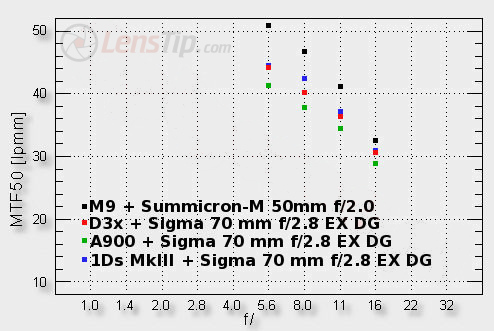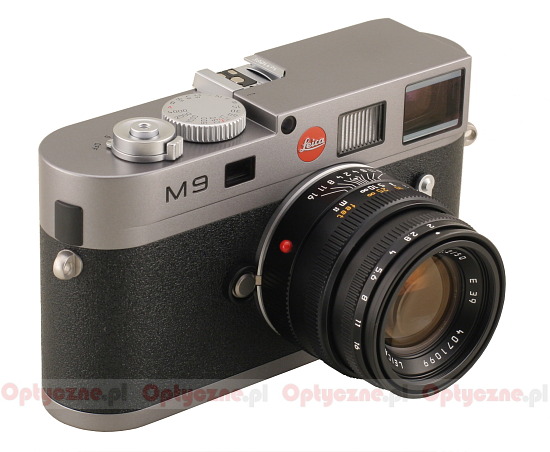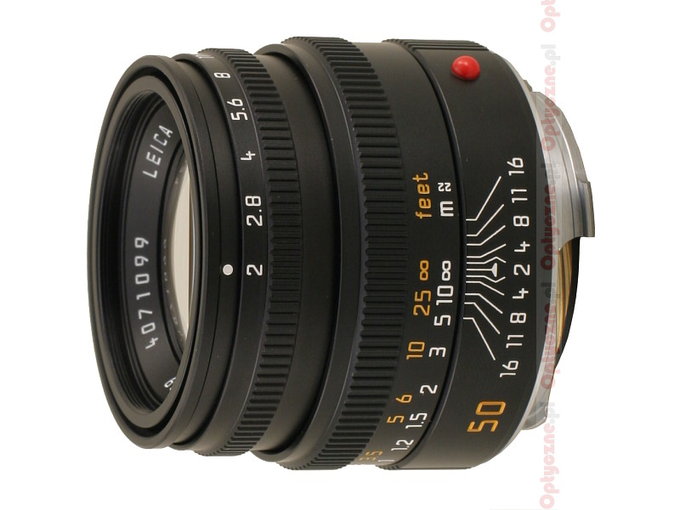Leica Summicron-M 50 mm f/2.0
1. Introduction
Rangefinder optics hasn’t recently appeared on the main page of portals dealing with tests of photographic equipment. The reason for this was simple. Good tests of these lenses could only have been conducted on analogue cameras. Obviously, you might have tried testing on digital sensors, but every attempt would mean problems. Using Leica M8 gave the image of a lens’ behavior at the center of the frame of a 1.3 focal length factor sensor. What it didn’t say, though, was how the lens behaved on a full frame that it was designed for. Additionally, Leica M8’s 10 megapixels didn’t demand much of the lens. Much higher demands give 12-megapixel sensors of Micro 4/3. Here, however, we encounter two problems. First of all, mounting rangefinder optics requires an adapter. Our experiences with adapters were negative, so we decided not to use them at all in our tests. Second of all, a test on a Micro 4/3 sensor gives nothing more than the image of the behavior at the very center of the area the instrument covers.
Everything’s changed on September 9th, 2009 when a full frame Leica M9 appeared on the market. Its 18 megapixels may seem a bit small at the first glance, compared to 24 megapixels of Nikon D3x and Sony A900, or even 21 megapixels of Canon 1Ds Mark III. Leica decided to remove the anti-aliasing filter, thus MTF values obtained by this camera are higher than all the full-frame competition. We’ve already talked about it in our review of M9, we’ll remind the graph here.
Please Support UsIf you enjoy our reviews and articles, and you want us to continue our work please, support our website by donating through PayPal. The funds are going to be used for paying our editorial team, renting servers, and equipping our testing studio; only that way we will be able to continue providing you interesting content for free. |
- - - - - - - - - - - - - - - - - - - - - - - - - - - - - - - - - - - - - - - - - - - - - - - -

We can clearly see that MTF50 values registered by Leica are about 15% higher than those that we can get on 1Ds MkIII or D3x. It’s not because we’re comparing behavior on expensive and sharp Summicron and cheap Sigma 70 mm f/2.8. First of all, Sigma 70 mm is a good and very sharp lens, second of all, the comparison is conducted at apertures not limited by optical aberrations, but diffraction, so all the differences in MTFs are a result not of optics’, but of the sensor’s work.
The conclusion is one. The difference between the results obtained on M9 and those generated by full-frame DSLRs is large, making comparisons between the systems not easy. Fortunately, DSLRs with smaller sensors come to rescue, something we’ll write more about in the chapter “Image resolution”.
It’s important that with the introduction of M9 on the market, totally new possibilities have come to life. We can check how lenses absent in other systems and unique, such as Leica Noctilux 50 mm f/0.95 or Summilux 21 mm f/1.4 perform. We have Zeiss lenses designed for Zeiss Ikon rangefinders awaiting. We don’t stop with expensive Leicas and Zeiss. Basically everybody’s interested how engaging and simultaneously cheap lenses like Voigtlanders of Nokton or Voigtlander Ultra-Wide-Heliar 12 mm f/5.6 ASPH, giving the angle of view of 121 degrees, will come off in our tests. That’s not the end either. Lenses of M mount have also been manufactured by companies like Rollei, Konica or Minolta. There are a few things to test, indeed.
Will the tests of lenses of M mount find lots of viewers? We trust they will. It’s an interesting enough system, tied to the legend of M series rangefinders, that the tests will also be read by people who’ve never taken pictures using rangefinders and don’t plan to do so. What’s more, we trust that there are still quite a few people in the world who use analogue rangefinders. It also seems that after the introduction of M9 on the market, rangefinders will be within financial reach of more people. A lot of M8 owners will decide to switch to M9, and this will make more affordable “eights” appear on the secondary market. The interest in these kinds of lenses also expands, due to the possibility of mounting it, by an adapter, on a fast growing family of Micro 4/3 cameras.
Our tests will start from a classic, so the Leica Summicron-M 50 mm f/2.0 lens. It’s a perfect match for every full-frame rangefinder. Standard focal length combined with small dimensions ideally fits into the philosophy of discreet rangefinder photography. It’s also of importance that it’s one of the cheapest Leica M lenses. We invite you to read further chapters.
The lens was delivered for tests by LeicaStore.
Information about our review method can be read in our article “How do we test lenses?"
 |







